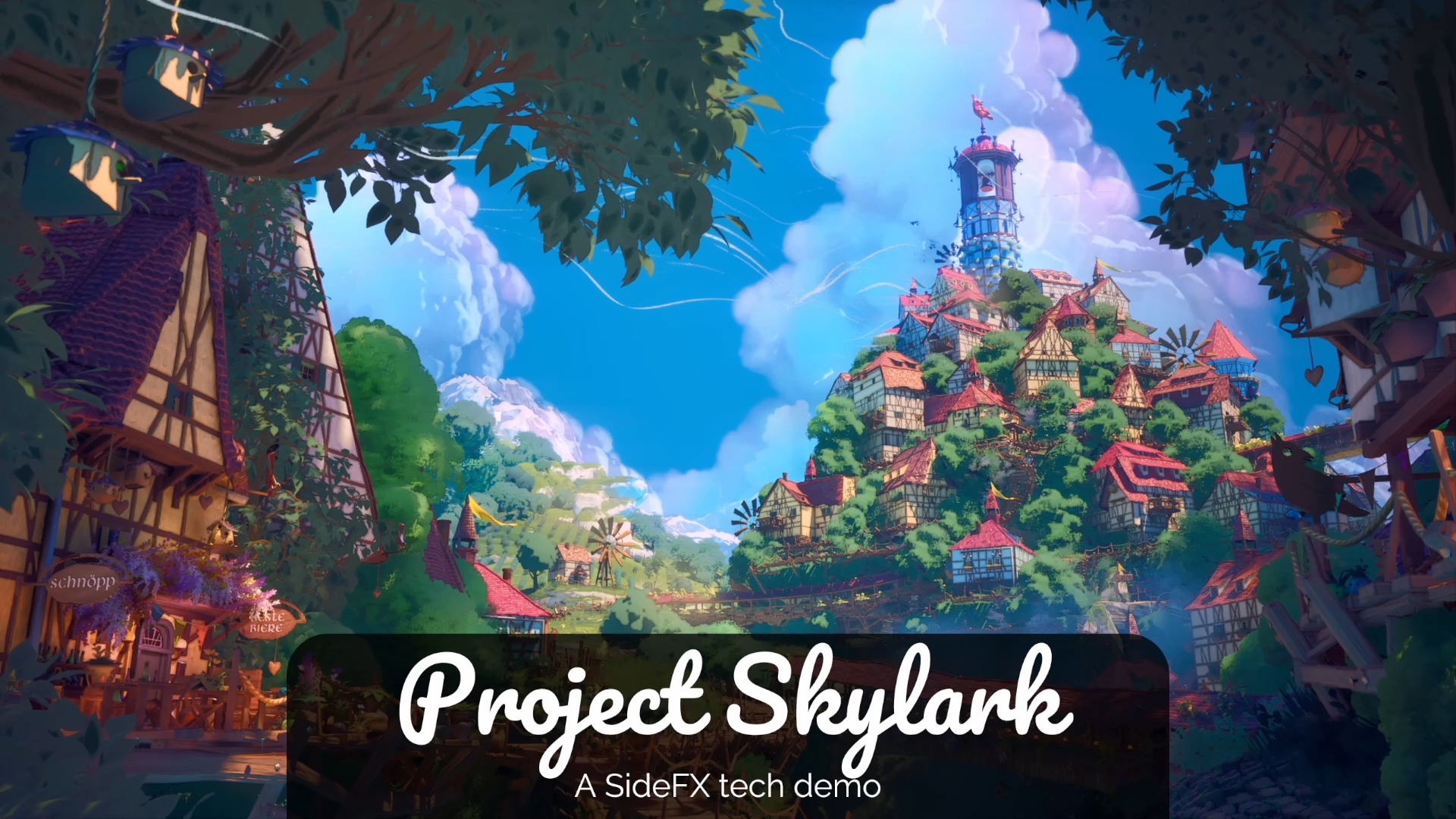
Project Skylark - Tech Demo
In the world of game development, there’s often a trade-off between an artist’s creative freedom and the efficiency needed to build complex environments quickly.
Project Skylark, a tech demo by SideFX, sits precisely at that intersection.
It shows how procedural tools don’t have to come at the expense of style or personality.
On the contrary, the project demonstrates how algorithms can become a powerful extension of creativity, enabling the construction of consistent, emotional, and distinctive worlds.
ENVIRONMENT
The setting is that of a stylized village, nestled in an idyllic landscape.
Houses, bridges, pots, clouds, birdhouses, everything was created in Houdini, and every element is customizable through procedural tools (Houdini Digital Assets, or HDAs).
Want to change the shape of a roof? Extend a bridge? Swap out one roof tile pattern for another? You can, with just a few clicks.
Thanks to Houdini Engine, all these changes can also be made directly within Unreal Engine 5, with no need for endless exporting.
RESOURCES
SideFX didn’t just showcase the result, it also released the entire project: Unreal files, assets, materials, and a series of detailed tutorials for anyone looking to recreate (or remix) the world of Skylark.
Available tutorials include:
Cloud: Procedural cloud generation and editing
Birdhouse: Customizable birdhouse creation
Rock: Stylized rock generation in Houdini
Bottle: From procedural modeling to UV and vertex colors
Trim Sheet: Generating procedural trim sheets
Plant Pots: Procedural vases shaped using curves
CONCLUSION
Project Skylark is more than a tech demo, it’s a statement of intent.
It shows how automation and procedural workflows can amplify human creativity rather than replace it.
In a creative environment where time and detail matter, tools like Houdini and Unreal are invaluable allies.
Whether you're a 3D artist, a game dev, or a lover of stylized worlds, Skylark invites you to explore a sustainable, modern pipeline where procedural generation becomes an extension of artistic thinking, not a compromise.
Read the full article here
Latest posts

PBL Database: realistic lighting for UE5.7 by Arthur Tasquin
Discover Arthur Tasquin's PBL Database: the toolbox for UE5.7 that teaches you how to manage light realistically, with correct physical values and reliable references. Perfect for learning and improving your workflow.

Buona la Prima - Episode 38
The Great Debate: Self-Publishing vs. Traditional Publishing

A Step Towards Interoperability: Unity and Epic Games Announce Strategic Collaboration
Unity and Epic Games are partnering to create a more open gaming ecosystem. The agreement brings Unity games to Fortnite and Unreal Engine support to Unity's e-commerce platform.